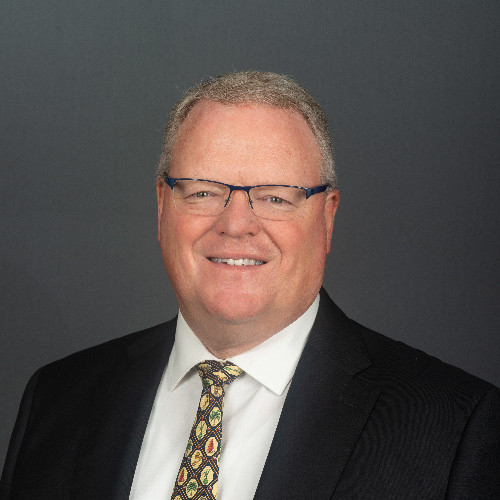M&T Bank Regional President for New Hampshire
Tim Wade

‘When
I first got here, I think we were No. 22 in the SBA lending field, and
now we’re No. 3. It’s just determination and paying attention and really
trying to do business with those businesses that need that kind of
help.’ You could say Tim Wade was bound for the Granite State ever since he met his wife. It just took a while to get here.
For
nearly eight years, the veteran M&T Banker Tim Wade has been based
in New England, first in Boston as its market president. In 2022, after
M&T acquired People’s United Bank, he moved his office to downtown
Manchester to become the bank’s regional president for New Hampshire,
where M&T operates 25 branches.
Wade,
who has been with M&T Bank for more than 28 years, was raised in
Illinois and attended Union College, a liberal arts college in
Schenectady, New York, where he met his wife, who is a native of
Laconia, NH.
Earlier this year, Wade was a guest on NH Business Review’s “Down to Business” podcast from which this interview was adapted.
Q. Let’s start off with who you are and your origins. What is your career background?
A. I’ve
been a banker ever since the beginning. I came out of college, and I
had to choose between Macy’s training program and KeyBank … so I went
into KeyBank, a great training program. I learned a lot about banking
and then went from there to Chase and then finally at M&T Bank in
1996. I’ve been with the bank a long time, all over in upstate New York
until 2017, when I was asked to come and start to really build off of
what we
had already shown in the area from dealer commercial services. We were
very large in dealer commercial services but nothing else.
I
came over, and we started an operation in Boston, and then five years
later, they asked me to redo it again in New Hampshire when we came
together with People’s United. This is
the first opportunity I’ve had to be in a region that has a terrific
retail exposure, and retail is our lead punch. Albany always had its own
retail but a little bit smaller. And Boston was just an office doing
lending.
Q. How would you say that those markets compare to each other?
A. M&T
started out as a bank in Buffalo. We are a community bank and have over
50% market share in Buffalo. And then we spread that across to
Rochester into Syracuse … Upstate New York operations led by retail, led
by business banking. And then, of course, being smart enough to be able
to do the larger deals as well and expand on that. We bought a smaller
bank in Albany. And we’ve always had a presence in New York City and did
a lot of real estate there, and then jumped all the way down to
Baltimore and then filled-in in between.
The
New England Market is here. Boston is obviously much more like New York
City, but Maine, New Hampshire and Vermont are more like Rochester,
Buffalo, Syracuse — where we show our strengths. These markets are built
on the communities, and we try to be a very large community bank, there
to service our communities, bring our communities up, improve the
communities so that as they get better, we do better.
It’s
just the right thing to do, quite honestly, to get involved and make
your community the right thing. And then the community loves you back.
That’s why we have No. 1 share in Buffalo and a No. 1 share in Baltimore
and a huge share in Rochester and Syracuse. And we’ll do that here.
We’ll just copy that same blueprint.
Q.
New Hampshire and New England as a whole is in large part a small
business community. Tell me a little bit about where you’re landing,
what types of businesses do you work and the size?
A.
We have the branch locations so we put business bankers right in those
branches. They coordinate with the branches, and the branch personnel
are taught to watch for those opportunities that come from the business
banking side. We do business with the primary businesses that are here:
doctors’ offices, lawyers’ offices, service providers, small
manufacturing companies, and really anything you can think of that’s
small business.
We’re a preferred lender in
the SBA (Small Business Administration) space. When I first got here, I
think we were No. 22 in the SBA lending field, and now we’re No. 3.
It’s
just determination and paying attention and really trying to do
business with those businesses that need that kind of help. These are
mostly smaller businesses, but a lot of different types of businesses. I
love the small manufacturer. Sometimes they’re contract manufacturers
that do business with anybody that comes along that needs their
services.
A lot of
(customers are) service providers. A lot of times our business customers
are coming right into the branch and getting help there with our
business bankers right there to help them. It’s a community approach.